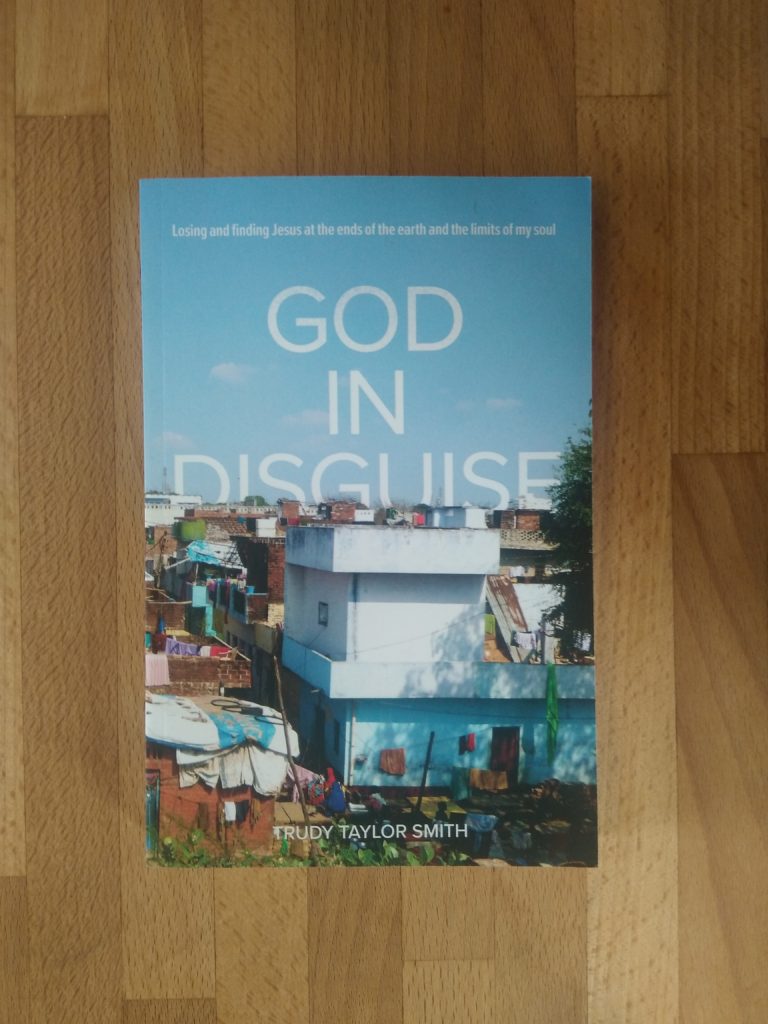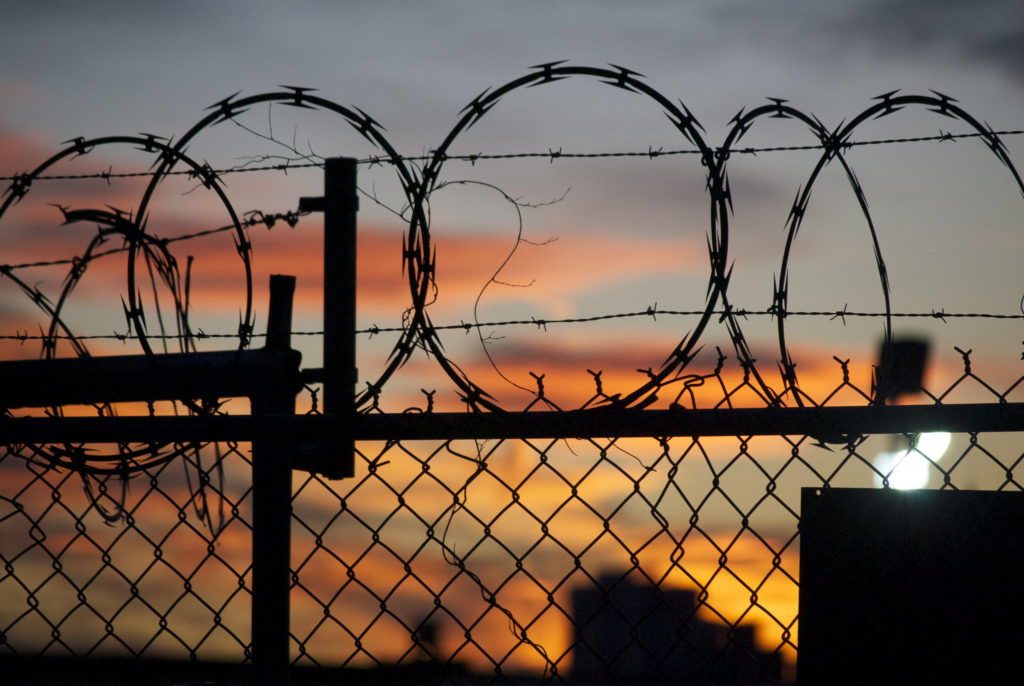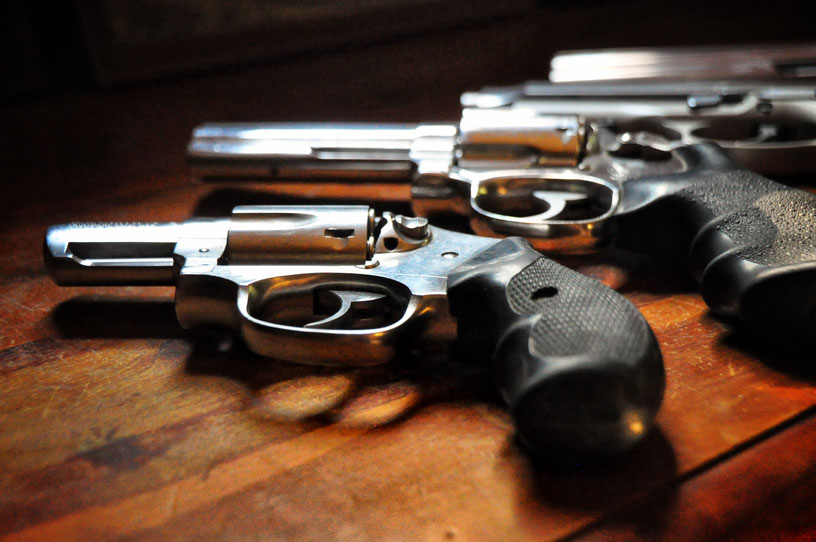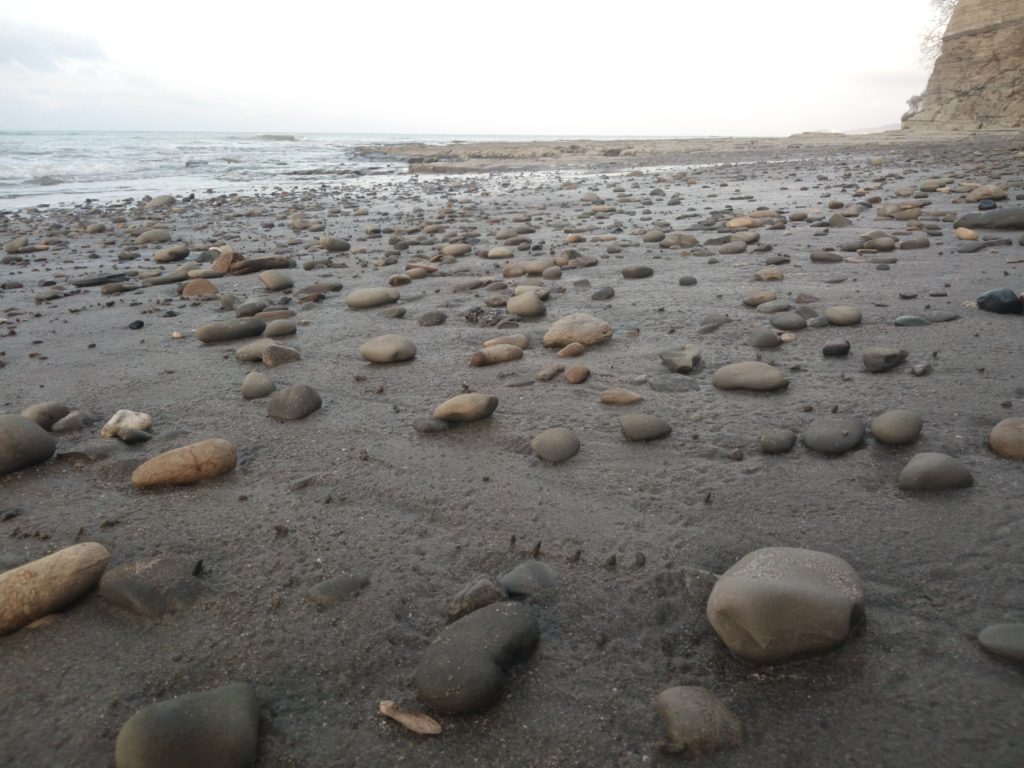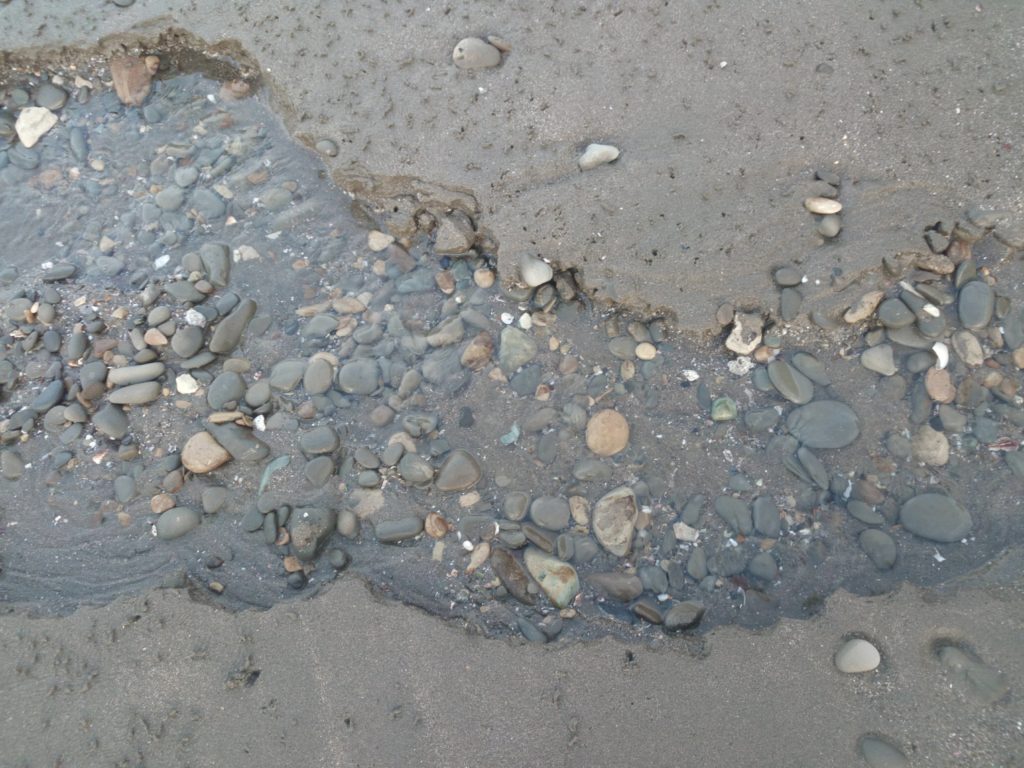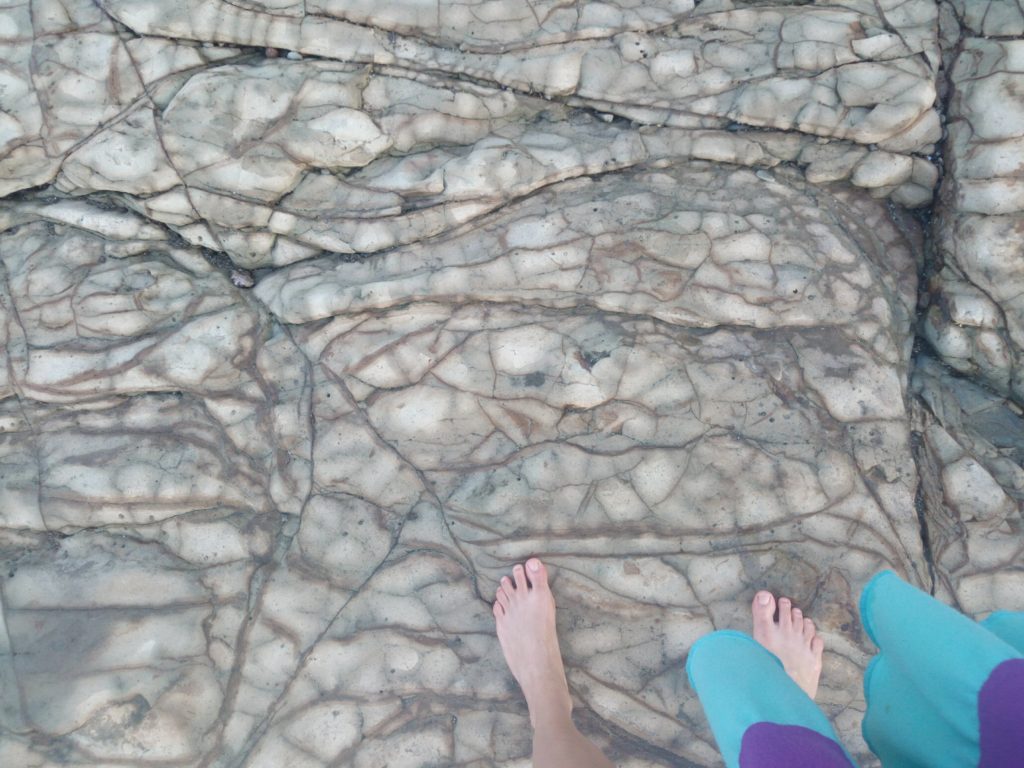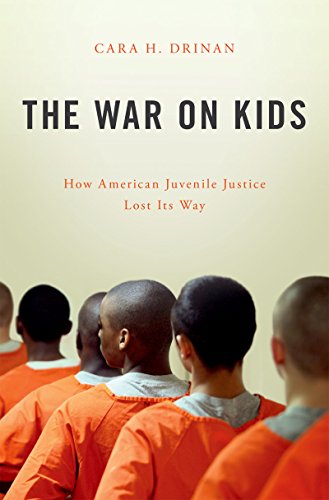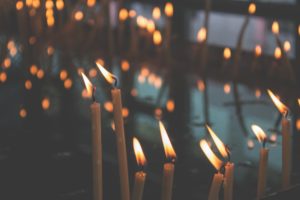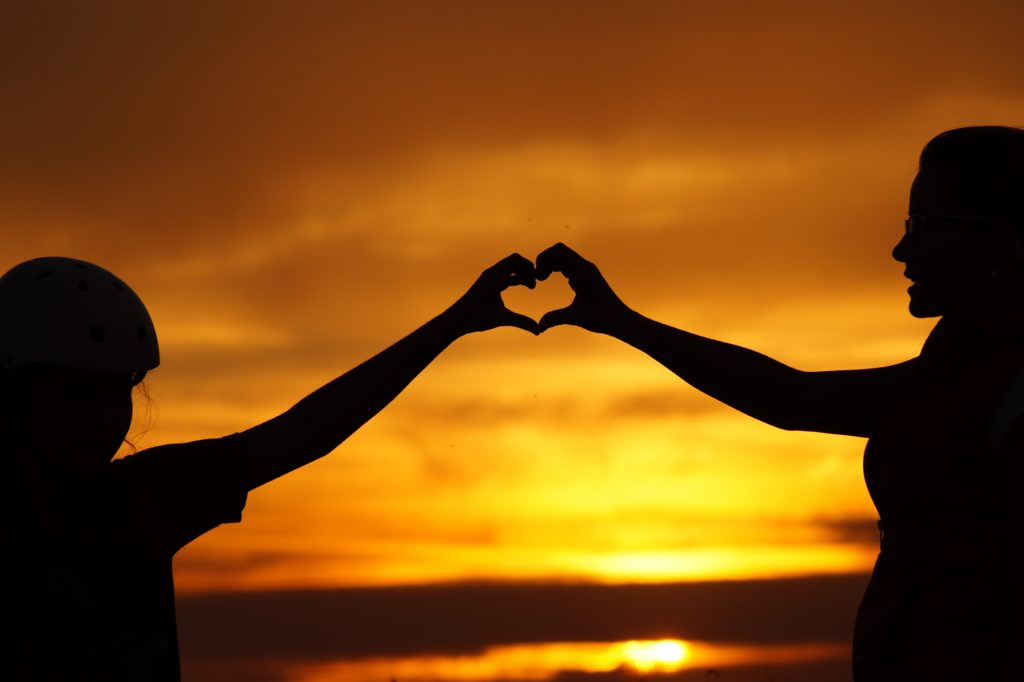
Category: Justice
God in Disguise: a guest appearance on Fuel Radio
Last week, I had the privilege of being interviewed as a guest on a friend’s podcast, Fuel Radio. It was fun to reflect with Rod Janz on the process of writing my book, God in Disguise, the lessons I carry with me from having been immersed in urban poor communities in India, and the way my spiritual journey has continued to unfold since my book was released last year. In particular, I enjoyed having the chance to intentionally remember the ways that failure and pain have unexpectedly become catalysts for the deepest healing in my life over the past few years. You can listen to the whole half-hour podcast here.
If you’ve read God in Disguise, I’d love to hear from you about how to book resonates (or doesn’t) with your own spiritual journey. Whether you’ve read the book or not, have you ever experienced an unraveling of your faith or your worldview? What happened next? Have there been times that you have found God in unexpected places, or found healing through what felt at the time like a dark and hopeless situation?
Prisons of Our Own Making: Fear in the Age of the Refugee
During the season of Lent this year, as we lament the ways that both we and the world in in which we live are broken, my church community is particularly focusing on the theme of imprisonment, the liberating power of Christ, and the places where we long to see that freedom break through.
Celine Chuang, another writer in our community, put together a beautiful booklet of readings for each day of the season, inviting us to use poetry, prose, and visual art to engage with the question, “What prisons – whether literal, spiritual, physical, or structural – are present in our world today: in our city, country, society, and in ourselves?” In this booklet, familiar voices from our own neighborhood find their way onto the page alongside those of theologians, activists, and artists from around the world, exploring what it means to “acknowledge and lament imprisonment” and to “posture ourselves towards and participate in liberation from these forms of captivity.”
The first step to getting somewhere is knowing where you want to go. And so as we seek to live into the vision of God’s Kingdom on earth, we are trying to imagine together: “What does freedom from prisons look like?”
The poem below was my attempt to name some of the prisons I see around me and to envision a life beyond them.
Prisons of Our Own Making: Fear in the Age of the Refugee
We
imprisoned by narratives of fear
and scarcity
label the other as
Terrorist;
Illegal:
taker of lives,
taker of jobs,
taking away our homogeneity
and sense of security.
We call our prison a fortress,
believing it is we
who have prevailed over
the chaos outside,
and not our own fear
that has won by
relegating our existence
to captivity and isolation.
And they—
those from whom
we have separated from ourselves
by language
by place of origin
by passport stamp–
or lack thereof–
they
are imprisoned, too.
But their cells are not
the walls of their own imagining.
They are the real cement and iron
of immigration detention centres
turning profit
by the bed
by the day,
punishing the audacity
of those who have the nerve to
cross politically imagined lines in the sand
and seek opportunity
seek safety
seek survival.
What would it be
if we could look them in the eye
and see
not outsider
or villain
or poster child
or political symbol
or threat to our way of life,
but a reflection
of ourselves?
A spark of the Divine;
a life that’s on the line.
A human being
who belongs,
and who longs
to be free?
“The 800-pound Gorilla in the Room”: Why addressing gun violence isn’t primarily about gun laws or mental illness
Like clockwork, another tragedy. No surprise, just a matter of statistics playing out; the status quo continuing to unfold. Seventeen people losing their lives in a killing spree inside a high school should knock the breath out of me with its brutality, but instead I felt numb, because in a country where 33,000 people lose their lives in shootings each year, and where Columbine was a shock but school shootings are now par for the course, I’ve seen it all before. I could almost have written the news reports myself, even before I was told anything about what happened.
I’ve been hesitant to write or post anything about the school shooting in Florida because I haven’t wanted to add to the noise, and because we’ve all heard each other’s usual talking points so many times that we’ve lost the capacity to really listen to each other, or–perhaps even more crucially–to think creatively outside the either/or dichotomy we inhabit.
But this time, something is different. The teenagers who lived through the hell of the attack are speaking for themselves, repudiating empty words of condolence from the public and our leaders and demanding concrete changes to prevent this familiar cycle from continuing. That gives me hope, and it makes me wonder whether we may be reaching–at last–a tipping point where real change is possible. School children around the country are planning a walk-out on April 20th to demand gun law reform, and that is a powerful demand for action that has not happened before.
Maybe all this anger and wisdom from the children on the front lines of this crisis will be enough to interrupt the scripted narrative of polarized debate that we adults fall into after each new round of bloodshed.
So I’m going to risk saying what’s on my mind. And it’s not all or even primarily about gun control. I offer these thoughts as ideas to consider and to enter into dialogue about. Because although we may have different perspectives on how to solve the problem, I think we can all agree at this point in time that America has a problem with gun violence, and that if there is a solution–or even a way to mitigate the damage–it is worth spending the time needed to figure out what it is.
First of all, there has been a lot of talk about the mental health or illness of the gunmen who mow down people in malls and movie theatres and schools. As a society, we should absolutely make sure that people in psychological distress have access to the help they need, but I agree with clinical psychologist Laura Hayes when she points out in a 2014 article for Slate that mass murder is not a symptom of mental illness, and that to “blame mental illness for violent crimes” only serves to further stigmatize people with mental health issues. A quick comparison of the large number of people living in the United States with mental illness to the relatively small number of perpetrators of violent crime quickly demonstrates that having a mental illness is a very poor predictor of whether a person will become a murderer. “Violent crimes,” Hayes writes, “are committed by people who lack the skills to modulate anger, express it constructively, and move beyond it.” To put it bluntly, “Mentally ill people aren’t killers. Angry people are.”
But let’s take that a step further. It’s important to be specific about whose anger we’re talking about. The perpetrators of mass shootings in America are virtually all men and boys, which points to the fact that we live in a society in which men and boys are not taught (or expected) to control and process their anger. Gun violence in America is inseparable from the wider issue of male violence.
Violence prevention educator, filmmaker, and author Jackson Katz explains the connection this way:
“The media-driven conversation about the causes of school shootings and mass shootings tends to focus on two main issues: gun availability and mental illness. What this leaves out, of course, is the single most important factor: the gender of the perpetrators. It’s as if no one wants to talk about the 800-pound gorilla in the room—the stunning fact that 99 percent of school shootings, and at least 67 of the last 68 mass shootings overall, have been committed by men and boys. Instead there’s this endlessly de-gendered talk about psychopaths, shooters, killers, suspects, youths, perpetrators, and troubled teens. As a result, we never ask tough, basic questions about why it is that men and boys are far and away the most common perpetrators of this kind of violence… we talk about all of these other important—but in my view secondary—factors. And the result is that we don’t examine the role cultural ideas and narratives about manhood play in rampage killings and other manifestations of violence.”
(You can read the rest of that interview with Katz here.)
Speaking to the “secondary factor” of gun availability, the fact that guns being so widely available is not the root cause of the violence in our society doesn’t mean that current gun laws aren’t contributing to the problem and making it worse. While we’re doing the hard work of transforming “cultural ideas and narratives about manhood” that encourage violence, it also makes sense to legislate intelligently in order to keep deadly weapons out of the hands of men and boys intent on harming others.
In November of last year, following the gun massacre in Sutherland Springs, Texas, the Scientific American ran an article “about four feasible legal and policy changes that would be most effective” in preventing shootings, according to research. None of these policies involve “confiscating everybody’s guns,” and unless you have DUIs or past instances of violent crime on your record, they wouldn’t restrict your access to guns. The proposed changes were to:
- Require gun purchase permits;
- Ban individuals convicted of any violent crime from gun purchase;
- Make all serious domestic violence offenders surrender firearms; and
- Temporarily ban active alcohol abusers from firearms.
These changes are just one well-researched option for making smarter laws to keep guns out of the hands of potential killers. Since a wide range of gun laws have already been implemented in various states and in other countries, we have the luxury of drawing from a lot of research and real-world experience in exploring what changes make sense to implement on a nationwide scale in the U.S. As compassionate human beings and as voters in a democracy where we all bear responsibility for the laws that govern our society, we ought to be taking the time to educate ourselves so that we can contribute to the collective soul-searching and problem-solving that’s needed to make change.
We may not all agree on what an ideal solution looks like, but at this point, passively wringing our hands about the complexity of the issue is no longer an option. If we care about the kids dying on our streets and in our schools every year, then let’s be adults, roll up our sleeves, and take action.
Armed Robbery (and an Invitation to Be My Ally)
Andy and I are walking down a busy stretch of beach on the Ecuadorian coast: vendors sell snacks on the sand as children scamper in and out of the turquoise waves at the edge of the vast expanse of the Pacific. A moment or two after entering an empty section of the beach where the long line of hotels and guesthouses gives way to sheer cliff face, we hear yelling behind us and turn to see what’s happening. It takes a second or two to comprehend.
It doesn’t seem real.
But there they are: two men with faces covered in black balaclavas, machetes held high over their heads, sprinting toward us from a mere twenty feet away.
The vision sinks in. We turn and run as fast as we can, but it won’t be fast enough.
Adrenaline surges through my veins. I am fear with legs, and while the animal of my body instinctively flees the threat, my brain processes everything in an instant: They might rape me. They might kill us. This might be the end.
There is an unclimbable wall of rock to our left, and the ocean to our right–into which we could try to escape, but there would be no advantage in struggling against our attackers in water up to our necks. They could drown us, butcher us with their three-foot-long blades. Stretching ahead of us, there’s nothing but empty beach for about a mile, so we can’t outrun them–if we try, they may tackle us with their machetes, and that will not end well.
“Stop!” I call to Andy. “Let’s just stop and give them what they want.” And let’s hope that all they want is what we’re carrying.
We wait, looking at each other. Looking behind us. In seconds, they’re upon us, yelling and threatening us with their weapons. Mostly, they swarm Andy, who is wearing the backpack and has the cellphone and wallet in his pockets. They move the machete back and forth impatiently near his arm, still yelling, as he reaches into his front pocket to dig out the wallet. I say something to him in English, maybe hurry up or let them get it. I am terrified that they will slice his arm, or his neck.
Then they have the backpack and Andy’s pockets are empty. “Este es todo, es todo,” I tell them. My voice is loud. Reasonable. Calm, in a way–but laced with fear; seeking to appease. (I may have said, “por favor.” I can’t remember. My entire consciousness was screaming, please don’t hurt him! Please leave us alone now! But I don’t know whether those pleas were translated into words.)
Now the men look at us again. Hold up their machetes. “¡Va!” they yell. “Go!”
We turn to move and one of the men makes another threatening movement in the air with his blade. “¡Corriendo!”
And we run. We run, and see our attackers running back in the opposite direction, further down the desolation of the empty beach. Andy catches a glimpse of them scrambling up a hidden path along the cliff from which they apparently descended, and suddenly I can no longer run. I walk doubled over through the loose sand; I am going to be sick. But then, instead of vomiting, I erupt into uncontrollable sobs. Andy is calm and consoling.
Afterward, Andy’s hands shake as he dials our bank to report his stolen credit and debit cards, and as he quickly types out new passwords for all of our online accounts from a hotel computer, but he does not cry. He does not re-live the event, over and over, for the next several days, he does not come down with a debilitating gastrointestinal illness by the end of the day, and his body does not lose its ability to regulate temperature for over a week, succumbing to either an erratic, low-grade fever or a fight-or-flight response on repeat. (These were the ways my body responded to what I experienced as an existential threat.)
Andy tells me later that it did not enter his mind that the men on the beach might rape me or kill us.
This fear, I believe, is one of the key differences between moving through the world as a man and moving through the world as a woman. I have been afraid of being raped–and possibly murdered–as far back as I can remember. It was a learned fear, directly taught by my mother and other concerned adults who wanted to make sure I knew which kinds of situations and men to avoid in order to keep myself safe. During my childhood, when a little girl a few years older than me was kidnapped and murdered in my sleepy small town, these fears were further cemented. But as the years went on, my friends and I had our own firsthand experiences with threatening men and boys to reinforce our sense of vulnerability; to remind us that we were rapable.
Sometimes this has meant having strangers yell their sexual intentions directly at me on the street; other times it comes in the form of objectifying comments, or being groped and grabbed. A couple of times, I have even been followed–once, in Buenos Aires, I ran and hid in a churchyard, my heart pounding in my chest, as the man who had been trailing me entered the churchyard, too, and looked around for awhile before finally losing interest and leaving. Over the course of my 29 years, I’ve experienced sexual harassment in my high school classroom, at work, while getting a massage… you name it.
These experiences vary in their intensity, and yet all of them–large and small–are linked together because I subconsciously recognize that they exist along a continuum of sexual exploitation and violence. They all signify the same terrifying reality that these men feel entitled to women’s bodies–to my body–and there’s no way for me to predict how far they might take that sense of entitlement in a given situation. Rape and sexualized murder lie at one end of the continuum, and this knowledge means that my various experiences of lesser degrees of harassment, assault, and violation exist within the context of that looming threat.
The armed robbery on the beach in Ecuador and the difference between Andy’s and my experiences in the same high-stress situation is illustrative of the fact that although both men and women (not to mention children of both sexes) are impacted by male violence, gender still largely determines its impact and frequency. As the #metoo campaign has made clear, male violence in its various forms–and the rape culture that condones and upholds it–is not a matter of deviant behavior by a few “bad apples” on the fringe, but rather a reality woven into the fabric of our society as a whole–present in our daily lives, workplaces, and relationships.
The prevalence of all this is no revelation to any of the women I know, but at least in my community here in Vancouver, all the recent publicity around sexual assault and harassment has sparked useful conversations, especially between women and men.
Although ending male violence will require transformation on a political, cultural, and systemic level, that transformation will never come without change in our interpersonal relationships and individual perspectives, so I am convinced that it must begin on a deeply personal level. Addressing rape culture and male violence is, first and foremost, spiritual work.
The change that is needed will involve more than an ideological shift, or legislated progress. Courageous, committed women have been resisting and working to end male violence for generations, but change will also require vulnerability, humility, compassion, and courage on the part of men who commit themselves to joining with us as allies to become part of the solution. For men, joining the struggle will mean men opening themselves up to being challenged, and being changed.
I see this happening around me, and I am heartened. I appreciated a recent blog post by the youth pastor at our church, in which he bravely articulated the fact that even as a victim of male violence himself, he has also been responsible for upholding and benefiting from rape culture in various ways. His vulnerable reflections expressed, eloquently and with nuance, the differences between his experience of sexual assault and those of female survivors for whom the continuing threat of repeated violence continues to shape day-to-day life on an ongoing basis.
I’ve also appreciated the way that my husband and other men in our church community, after taking the time to listen to the stories of the women around them, have begun meeting together for conversation and learning about male violence and the toxic versions of masculinity that our culture teaches. They are seeking to engage in the hard work of uncovering and uprooting these things in themselves; challenging one another to grow into healthy masculinity and to interrupt and resist both the overt and insidious patterns of violence at work in their relationships, workplaces, and wider community.
We are still at the beginning of a long journey, but I so appreciate the willingness of these men to listen, to take responsibility for their own thoughts and actions, and to engage with these issues even when it’s uncomfortable–understanding that the women around them don’t have the luxury of choosing whether or not to pay attention.
My heartfelt request to all the men in my life is to stand alongside me as a woman by doing the same.
Juvenile Injustice
This week, The Englewood Review of Books published my review, examining where the American juvenile “justice” system has gone wrong and exploring pathways toward reform. How can we work to protect and support kids to flourish instead of adding to the trauma of those who have already endured poverty, violence, and abuse? Here’s how my review begins:
“In The War on Kids: How American Juvenile Justice Lost Its Way, law professor Cara H. Drinan draws on both academic research and first-hand, personal accounts to expose the oppressive system that funnels our nation’s most vulnerable children and youth into prisons. More than one million kids are arrested every year across the country (4), and nearly 100,000 of them will be incarcerated alongside adults… “
Head on over to the Englewood Review of Books to read the rest!
Prayers for the deported
Today, The Mudroom has published an essay I wrote about the grief of journeying alongside refugee claimants who are denied asylum, and the ways that my coworkers and I have learned to care for our souls so that we can continue to reach out to new arrivals despite the recurring pain of having friends deported. Here’s how it starts:
Silently, we sit around in a circle as my co-worker picks up the first candle, speaking a name and a prayer as she lights the wick and sets the tiny flame down in the middle of the table. We each follow suit, one prayer and tongue of fire after another.
God, we don’t know where they are or if they’re alive…
Please keep her safe…
Please provide whatever he needs…
Just don’t let them be alone….
May she know that she is loved.
Each candle on the table represents a friend who has been deported. Each prayer is for a family or an individual we have accompanied through the process of making a refugee claim in Canada. These people have all failed to secure the protection they have asked for, often because their story was not believed…
You can read the rest of the piece over at the The Mudroom. If you are someone who works with/lives alongside marginalized communities facing frequent violence or loss, what are the ways that you have learned to tend your soul in such a way that you are able to continue loving and reaching out without succumbing to burnout, hopelessness, or compassion fatigue? How can we strengthen ourselves to live as friends and allies with the oppressed over the long haul? I’d love to hear from you.
Two Canadas
Every week, our community gathers for a shared meal. We are made up of staff, volunteers, newly-arrived refugee claimant families living in community with one another in the share space of the welcome houses, and families who have already moved out and are in various stages of establishing themselves in Canada. Someone volunteers to cook, and we indulge in Kurdish or Afghan or Congolese food, getting to know each other a bit better by experiencing the smells and flavors that the cooks for that week have grown up with.
It’s getting late on a Tuesday night, and the crowd is thinning out. My friend has come to community dinner after an early morning and a long day at work, but he stays to wash dishes anyway. As we stand together at the sink, scrubbing and rinsing the plates and glasses, I ask him how work is going. He works in the most impoverished part of Vancouver, known locally as the Downtown East Side. This diverse neighborhood is home to some vibrant and inspiring communities, full of people whose stories of creativity and resilience would take your breath away. Paradoxically, it is also a place where issues of drug addiction, homelessness, and street prostitution are concentrated and contained in the middle of what is otherwise known as one of the “most livable” cities in the world. It’s the same neighborhood where Andy and I lived with the Servants community for six months when we first arrived in Canada, and it’s currently the epicenter of BC’s fentanyl crisis.
Fentanyl is an opioid 100 times stronger than morphine, and it has become so common in the street drugs sold and consumed in the Downtown East Side that 80% of the street drugs tested in a recent study were laced with it. This means that on a daily basis, the desperate people turning to drugs to cope with their pain and trauma—such as sexually exploited women, abused foster children who have aged out of care, and people with chronic, untreated mental illness—are now at higher risk of losing their lives, because the same dosage of heroin, cocaine, or crystal meth that would have merely provided a short period of euphoric escape in the past is now likely to deal a death blow. Overdose deaths are nothing new in Vancouver, but the result of fentanyl’s proliferation has been such a sharp increase in overdose deaths across BC (922 in 2016 alone) that our provincial health officer has declared a public health emergency, and the province has urged the federal government to do the same.
My friend’s job has made the crisis personal. He’s been trained to use Narcan, an opiate antidote that works as an emergency treatment for overdoses by blocking the effects of opiates on the brain. During one of his shifts, he found a man in the street who had overdosed on an opiate laced with fentanyl, and he saved the man’s life by injecting him with naloxone and waiting with him until an ambulance arrived.
My friend tells me about the sense of fulfillment he gets from being part of a community at work that is building people up, and the happiness he feels in seeing people make progress in their lives as a result of the care and respect they’ve been shown. He reflects on the anger he feels about the government’s complacency in responding to the fentanyl crisis, and the way that the down-and-out people he sees in the neighborhood are robbed of their dignity in a million different ways on a daily basis. He even reflects on the similarity between the indifference of the wealthier people he sees interacting with homeless people in the Downtown East Side, and the privileged obliviousness with which he once lived his life in his home country—before he lost everything, before his family sought asylum on the other side of the world, before they entered into temporary poverty and into the stressful process of waiting for The Powers That Be to decide their fate in a hearing room.
I am moved by my friend’s compassion; by the fact that instead of losing himself in anger or despair over the injustice that he himself is experiencing, he is instead choosing to throw himself into the hard work of confronting suffering, building relationships, and doing what he can to make the world a better place. My friend hails from a country that has been torn apart by war. He and his family were forced to flee their home under threat of death, and so far, they have experienced the refugee protection system here in Canada as an unresponsive bureaucracy that is yet to grant them protection or provide any promise of permanence or safety. (So much depends on the subjective assessment of the particular human being assigned to decide your case, the potential ignorance or inflexibility of the system, or how well or poorly your lawyer does their job…)
Yet instead of feeling self-pity, what my friend feels is a sense of righteous anger on behalf of all those who are unjustly suffering in our society. “You get very tired, but at the same time there is something pushing you,” he explains, speaking of his sense that God strengthens and inspires him to continue being present with people around him who are in difficult circumstances.
We discuss the idea that there are actually two Canadas: one inhabited by wealthy people who can choose to go about their lives without ever facing the brutal realities of poverty, addiction, and injustice in their country, and another inhabited by marginalized people like the ones my friend meets at work. He views the world of the Downtown East Side as the more honest one because the people he’s gotten to know there are so real. “There’s no fakeness,” he explains. “If I had to choose between the two,” my friend states with conviction, “I would choose to stay with those guys [in the Downtown East Side].”
Tears spring to my eyes as I realize that in the solidarity my Muslim friend describes, I am encountering the heart of Christ. I realize that, in the relatively brief time that he has lived in this country—with precarious status, no less—my friend has engaged more fully with Canadian society than the majority of people who have lived here their entire lives without ever having to justify their presence within these borders. I realize that this man’s life challenges me to embody the ideals that I myself profess but so easily fall short of living out. My friend is a refugee, but that label doesn’t even come close to capturing who he really is.
I pray for the day when my friend’s family will be allowed to officially call this place home, the day the beauty of their lives and contributions will be recognized and welcomed, and the day that my friend’s longings for justice will be fulfilled.
Today I wear shorts: A poem written in anger
Sometimes when I experience street harassment, I confront the inappropriate words or behavior right there in the moment. But much more often, I am so taken off guard–or uncomfortable, or even afraid–that I either find myself unable to meaningfully respond at all, or I make a calculated decision to exit the situation as soon as possible instead of reacting, for my own safety. In such instances, rage or disgust tends to start welling up inside me as soon as I walk away. These emotions are directed towards the person who violated or intimidated me, and also–unfairly, I know–at myself, for my own silence and passivity, or for not thinking quickly enough to find the words or the action that I needed in the moment.
In her book The Artist’s Way, Julia Cameron writes that “anger is a map” that “shows us where our boundaries are,” what is important to us, and “where we want to go.” When respected and “acted upon” instead of “acted out,” Cameron says, anger helps us find a way forward. So today, instead of stewing powerlessly on my anger and replaying this infuriating episode over and over again in my head, I’ve decided to write it out–what happened, and what I wish I had been able to say at the time. What I still want to say to the world.
Here it is, a poem mapping out my anger to put it to use:
Today I wear shorts
Today I wear shorts
Because the weather is warm.
Because I want to be free.
Because I have not felt the pleasure
of a temperate breeze
against my bare legs
since I bundled up last October.
And yes, because my legs are beautiful.
Because I am not ashamed of my body,
and because I have no reason
to hide my God-given limbs
from you or from anyone else.
And no, I do not owe you any explanation
for the shorts I wear today.
But it would appear that I do
need to explain the self-evident fact
that I am not wearing shorts
for you to take pictures of my ass
on your cellphone
while you wait in line for the bus
while my head is turned the other way
while another man loudly announces to me,
and to others,
what you are doing.
Perhaps, in the privacy of your addiction
you have seen so many women on the screen—
performing a false intimacy,
giving you something for nothing,
posing and moving as though they belong to you—
that you have forgotten:
we all belong to ourselves,
and you are not entitled
to my body or to anyone else’s.
Or perhaps, you have learned
to treat people like things
because this is the cycle
your own experience brings.
I’m sure that there are reasons,
but whatever they are,
none could constitute an excuse.
So stop.
The pixels in the big picture
Helping families pick out second-hand cutlery and put together almost-matching sets of used living room furniture. Moving heavy boxes of someone else’s stuff until I’m left with sweat-stained armpits and regrets about my business casual decision that morning. Sitting in living rooms drinking tea, or sitting in high-rise law offices downtown—sometimes just observing the legal appointment, other times interpreting for the clients.
My job is an eclectic mixture of activities, many of them strange: I rummage through a cabinet of donated toys, looking for anything that isn’t gendered with an angry facial expression or the color pink, and wrap it for the birthday party we’ll hold that night. Or I sit with a grown woman and make up simple math problems with coins to help her learn to identify Canadian currency so she won’t get fired from her new job as a cashier. I once got lost inside a huge mall after going with a client to pay for another month of cell phone service so we could communicate about her appointments.
There are emails and letters to advocate for bank accounts to be opened, for exceptions to be made, for families to be reunited. There are endless, tedious forms to be filled out for housing and status and permission to work. Sometimes when I make appointments to fill out this paperwork, I end up wondering how much more mindless admin I can stand, but other times the paperwork gets shoved aside for impromptu marriage counseling, or the sacred gift of a deeply-held story.
Sometimes, the absurdity of my work is in the wild swings between the momentous and the mundane. There is the day when we receive news that one of the refugee claimants whose deportation we had fought so hard to prevent had died halfway around the world. Tears. Staring at the floor. Feeling that powerless sadness and rage all over again. Ten minutes later, I am in my supervisor’s office discussing registration papers for a contraband kitten—the family it belongs to has already lost so much, and I am not about to let them lose the one cuddly thing that is going right in their lives because of technicality.
In this job, the big picture is the very exciting aim of extending radical welcome by journeying with people through the refugee claims process and through their first few months or years of creating a new life in a strange country. Close-up, this picture is made up of a billion tiny pixels of day-to-day, not-very-significant-feeling details. It’s made up of repetition. Of boredom, even. But I believe in the big picture, and there are times when I get to see the whole image reflected in the microcosm of a single moment or conversation. Those are the flashes of light that remind me where all of this is headed, and drum into my soul the long-resisted truth that small things with great love is the only greatness possible.
photo credit: brianfagan <a href=”http://www.flickr.com/photos/52231465@N06/28615442915″>Week 30: Patterns</a> via <a href=”http://photopin.com”>photopin</a> <a href=”https://creativecommons.org/licenses/by/2.0/”>(license)</a>
